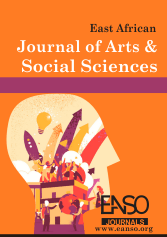Determinants of Informed Decision-Making on Sexual Relations, Contraceptive Use, and Reproductive Health among Women of Reproductive Age: A Case of Married Women in Tanzania
Abstract
Background: The percentage of women aged 15-49 who have the autonomy to make informed decisions about sexual and reproductive health varies globally. According to recent data, approximately 57% of women in this age group can make decisions independently. However, regional disparities exist, with lower rates in many developing countries, particularly in Sub-Saharan Africa. Objective: Our goal was to ascertain the determinants of informed decision-making on sexual relations, contraceptive use, and reproductive health among women of reproductive in Tanzania. Methods: This cross-sectional study used secondary data from the Tanzania Demographic and Health Survey and Malaria Indicator Survey of 2022. The study population included married women aged 15-49 years. A multinomial regression model was used to identify determinants associated with making informed decisions on Sexual Relations, Contraceptive Use, and Reproductive Health. Results: A total of 6730 married women were included in the analysis. the majority resided in rural areas, had completed primary education, reported never hearing about family planning on the radio, not encountered family planning information on popular social media platforms like Facebook, Twitter, or Instagram, perceived distance to a health facility as a non-issue, were employed, and had 1-5 living children. On the other hand, Age, employment, husband employment, wealth index, distance to a health facility, and having living children were associated with higher odds of making all three informed decisions while hearing about family planning on the radio had lower odds. Conclusion: The study identifies factors influencing decision-making in married Tanzanian women of reproductive age. Older women and those with stable economic environments and financial independence are more likely to make informed choices. Access to healthcare facilities and good parenting experiences also improve women's decision-making autonomy. Targeted education and empowerment programs should be introduced to enhance informed decision-making among married women in Tanzania
Downloads
References
Adedini, S. A., Odimegwu, C., Imasiku, E. N., Ononokpono, D. N., & Ibisomi, L. (2014). Regional variations in infant and child mortality in Nigeria: a multilevel analysis. Journal of Biosocial Science, 46(2), 165-187. https://doi.org/10.1017/S0021932013000488
Ajzen, I. (1991). The theory of planned behaviour. Organizational Behaviour and Human Decision Processes, 50(2), 179-211. https://doi.org/10.1016/0749-5978(91)90020-T
Bongaarts, J. (2020). The impact of family planning programs on unmet need and demand for contraception. Studies in Family Planning, 51(3), 237- 251. https://doi.org/10.1111/sifp.12114
Cleland, J., Harbison, S., & Shah, I. H. (2014). Unmet need for contraception: issues and challenges. Studies in Family Planning, 45(2), 105-122. https://doi.org/10.1111/j.1728-4465.2014.00380.x
Fagbamigbe, A. F., Akanbi, M. A., & Olumide, A. M. (2020). Women's autonomy in healthcare decision-making and its effect on maternal health care utilization in Nigeria. Heliyon, 6(11), e05508. https://doi.org/10.1016/j.heliyon.2020.e05508
Kruk, M. E., Gage, A. D., Arsenault, C., Jordan, K., Leslie, H. H., Roder-DeWan, S., ... & Pate, M. (2016). High-quality health systems in the Sustainable Development Goals era: time for a revolution. The Lancet Global Health, 6(11), e1196- e1252. https://doi.org/10.1016/S2214-109X(18)30386-3
Mosha, I., Ruben, R., & Kakoko, D. (2016). Family planning decisions, perceptions and gender dynamics among couples in Mwanza, Tanzania: a qualitative study. BMC Public Health, 13(1), 523. https://doi.org/10.1186/s12889-013-2531-4
Our World in Data. (2023a). Women who make their own informed decisions regarding sexual relations, contraceptive use and reproductive health care (% of women age 15-49). Retrieved from https://ourworldindata.org/grapher/women-making-their-own-informed-decisions-regarding-sexual-relations-contraceptive-use-and-reproductive-health-care
Our World in Data. (2023b). Empowerment of women and girls. Retrieved from https://ourworldindata.org/gender-equality
Pratley, P. (2016). Associations between quantitative measures of women's empowerment and access to care and health status for mothers and their children: a systematic review of evidence from the developing world. Social Science & Medicine, 169, 119- 131. https://doi.org/10.1016/j.socscimed.2016.08.001
Tumlinson, K., Speizer, I. S., Curtis, S. L., & Pence, B. W. (2015b). Accuracy of standard measures of family planning service quality: Findings from the Simulated Client Method. Studies in Family Planning, 46(4), 399-409. https://doi.org/10.1111/j.1728-4465.2015.00037.x
Tumlinson, K., Speizer, I. S., Davis, J. T., Fotso, J. C., Kuria, P., & Archer, L. H. (2015a). Partner communication, discordant fertility goals, and contraceptive use in urban Kenya. African Journal of Reproductive Health, 17(3), 79- 90. https://www.ajrh.info/index.php/ajrh/article/view/151
UN SDG Indicators. (2023a). The global status of SDG Indicator 5.6.1. Retrieved from https://unstats.un.org/sdgs/indicators/database/
UN SDG Indicators. (2023b). SDG Indicator 5.6.1: Proportion of women aged 15-49 years who make their own informed decisions regarding sexual relations, contraceptive use, and reproductive health care. Retrieved from https://unstats.un.org/sdgs/indicators/database/
UNICEF. (2021). Women's empowerment and gender equality. Retrieved from https://www.unicef.org/gender-equality
United Nations Population Fund. (2020). Tracking women’s decision-making for sexual and reproductive health and reproductive rights. Retrieved from https://www.unfpa.org/sites/default/files/resource- pdf/Tracking_womens_decision- making_for_sexual_and_reproductive_health_and_reproductive_rights.pdf
United Nations. (2022). Sustainable Development Goals. Retrieved from https://www.un.org/sustainabledevelopment/sustainable-development-goals/
Upadhyay, U. D., Gipson, J. D., Withers, M., Lewis, S., Ciaraldi, E. J., Fraser, A., ... & Prata, N. (2014). Women's empowerment and fertility: A review of the literature. Social Science & Medicine, 115, 111-120. https://doi.org/10.1016/j.socscimed.2014.06.014
World Bank. (2023). Women making their own informed decisions regarding sexual relations, contraceptive use and reproductive health care (% of women age 15-49). Retrieved from https://data.worldbank.org/indicator/SH.STA.SRHF.ZS
World Health Organization. (2023). Proportion of women aged 15-49 years who make their own informed decisions regarding sexual relations, contraceptive use, and reproductive health care.Retrieved from https://www.who.int/data/gho/indicator-metadata-registry/imr-details/indicator-details/GHO/proportion-of-women-aged-15-49-years-who-make-their-own-informed-decisions-regarding-sexual-relations-contraceptive-use-and-reproductive-health-care
Yzer, M. (2012). The integrative model of behavioural prediction as a tool for designing health messages. In R. J. Rice & C. K. Atkin (Eds.), Public communication campaigns (4th ed., pp. 21-36). SAGE Publications.
Copyright (c) 2024 Nsajigwa Mwalupani, Malenda Sagumo, Naomi Msese

This work is licensed under a Creative Commons Attribution 4.0 International License.




























